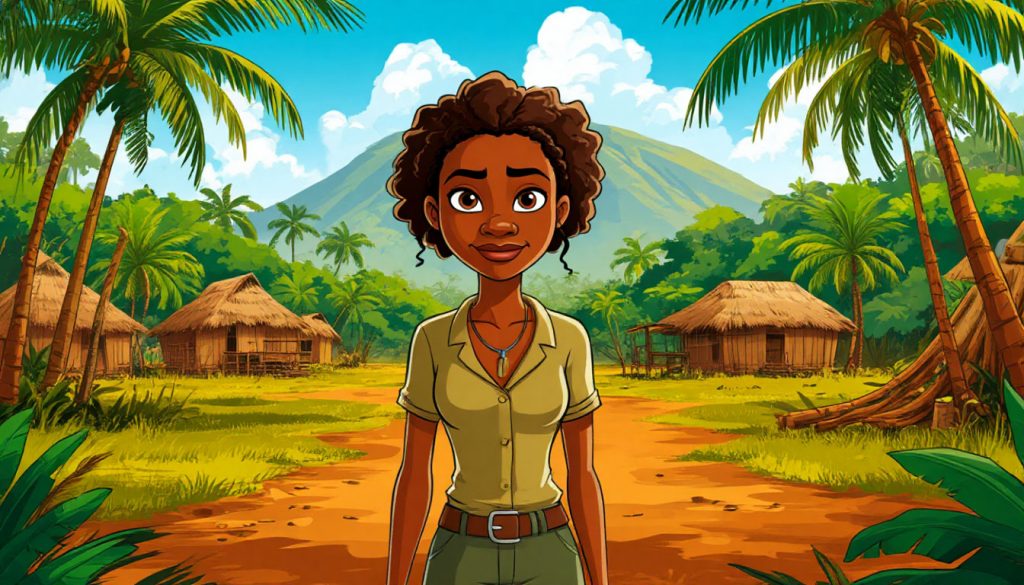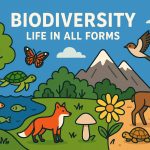Madagascar is the fourth largest island in the world, located in the Indian Ocean off the southeastern coast of Africa. Known as a “living laboratory” of evolution, this island nation is home to plants and animals found nowhere else on Earth. Its isolation for over 80 million years has allowed biodiversity to flourish in stunning and unusual ways, making Madagascar one of the world’s top conservation priorities.
Geological Origins
Madagascar broke away from the Indian subcontinent around 88 million years ago. This ancient separation created an evolutionary environment untouched by many continental influences. As a result, species on the island evolved independently, leading to extreme levels of endemism—meaning many species exist only there.
The island includes varied geography:
- Rainforests in the east
- Dry deciduous forests and spiny deserts in the west and south
- Mountainous highlands in the center
- Coral reefs along the coasts
Unique Biodiversity
Madagascar is home to:
- Over 90% of its wildlife found nowhere else
- Lemurs – 100+ species of these primates live only in Madagascar
- Baobab trees – Iconic trees that store water and have distinct swollen trunks
- Chameleons – About half of the world’s chameleon species live here
- Tenrecs and fossa – Unique mammals that resemble hedgehogs and small felines
- Exotic birds and reptiles such as tomato frogs, leaf-tailed geckos, and snakes
In total, Madagascar has over 11,000 endemic plant species and thousands of endemic animals.
Indigenous Cultures and People
The people of Madagascar, known as the Malagasy, are descended from both Southeast Asian and East African settlers. The island’s culture is a blend of influences:
- Language: Malagasy (Austronesian origin) is the main language, alongside French
- Traditional beliefs: Ancestor worship and spiritual customs are common
- Zebu cattle: A central part of life, economy, and ritual
Madagascar has around 30 million inhabitants, many of whom live in rural communities.
Conservation Challenges
Madagascar’s rich biodiversity is under serious threat due to:
- Deforestation for agriculture and fuel
- Slash-and-burn farming (locally known as tavy)
- Illegal wildlife trade
- Habitat loss from mining and logging
- Climate change and natural disasters like cyclones
Over 90% of Madagascar’s original forests have been lost, putting many species at risk of extinction.
Conservation Efforts
Despite challenges, local and international efforts are working to protect the island’s ecosystems:
- National parks and reserves: Areas like Andasibe-Mantadia, Ranomafana, and Isalo protect endangered species
- Ecotourism: A growing industry that helps fund conservation while educating visitors
- Community-based projects: Empower local people to conserve resources and develop sustainable alternatives
- Reforestation initiatives: Aim to restore degraded land and connect fragmented habitats
Madagascar is supported by organizations such as WWF, Conservation International, and local NGOs.
Madagascar’s Global Importance
The island is a global biodiversity hotspot, meaning it has high endemism and is under severe threat. Saving Madagascar’s ecosystems is crucial not only for its wildlife but also for maintaining global biodiversity and climate regulation.
Conclusion
Madagascar is a treasure trove of natural wonders. From lemurs leaping through the trees to giant baobabs silhouetted against the sky, it reminds us of how unique and fragile life can be. Protecting Madagascar means preserving one of the planet’s most extraordinary and irreplaceable ecosystems.
Glossary
- Endemic: Found only in one geographic location
- Lemurs: A group of primates native only to Madagascar
- Biodiversity hotspot: A region rich in species and under threat
- Tavy: A traditional slash-and-burn farming method
- Ecotourism: Responsible travel that supports conservation and communities


